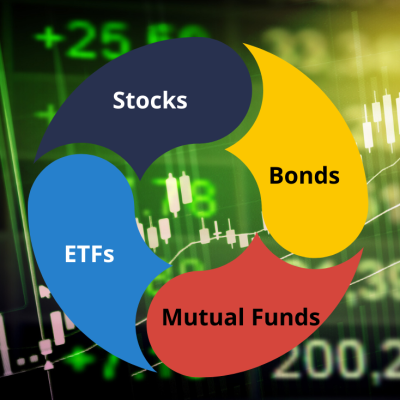Knowing When to Buy and Sell Stocks
Knowing when to buy and sell stocks involves following a good trading plan. Learn how to create the perfect plan with Queensway.

Locking Your Stock Profits in a Barrel
There is nothing more heartbreaking than watching a trading position in stocks increase, doing the victory dance, and then plummet to the ground – all because the position wasn’t closed in time.
Finding the right time to buy and sell stocks is essential in becoming profitable in the long term.
Most importantly, to decide when to buy and sell stocks requires having a sound trading plan that will accurately outline how to buy and sell stocks depending on financial goals, personality as a trader, and availability.
All this information should be used to create a trading strategy.
Taking the time to learn how to identify exit and entry signals when buying and selling stocks is, therefore, the hard part of becoming a successful trader. Knowing the perfect entry and exit positions at every point in time depends on the trading strategy and market approach employed.
While every trader’s natural instinct is to buy and hold on to the stock bought for as long as possible, there are different ways to get out of the markets depending on one’s trading style.
The most popular short-term trading styles are day trading and scalping. Longer-term traders can use swing trading and position trading. Each one entails holding on to stocks for different periods (a few minutes, one day, one week, or longer). That is why, every time a trading position is opened, a ‘when to sell stocks plan’ must be applied.
Ultimately, all these rules must be clearly stated in the trading plan to forestall emotions from taking over and help buy and sell stocks at the best possible time, and to lock in the maximum return on investment.

Deciding when to Buy and Sell Stocks
When buying shares, the trader must decide how much he/she thinks they will appreciate. This should not be a wild guess to determine where and when to buy or sell a position, but rather the result of some good old fashioned fundamental analysis or technical analysis.
Deciding when to sell is based on a decision on just how much profit is desired per share at the very least, and once the stock price appreciates to that point, sell! No delays!
Experienced traders do not worry about missing out on potential future profit to be made from the appreciation of the stock, as one cannot lose what one does not have, and the stock might depreciate unexpectedly instead of appreciating.
Think about what to do when facing a losing position
In an investment/trading plan, traders determine decision points for when to sell shares once they begin to lose value (as well as when to sell them when they are profitable). These decision points are based on fundamental analysis and technical analysis depending on which one is chosen as an anchor.
Perhaps some fundamentals have changed for the company, a sector, or the economy as a whole. The plan should have decision points on levels of interest rates, inflation, growth targets, profit forecasts, and so on. If the stock starts to fall, maybe the fundamentals are to blame, but it might also be interesting to have a look at the charts.
Check the price action and apply some technical analysis to determine if the stock is evolving around significant levels (support, resistance, trendlines, channels). Maybe the stock is overbought, and it is simply retracing and will therefore soon reverse back into form.
Have Good Communication with the Broker in Case of an Emergency
During a trading stampede (when everyone is rushing to sell or buy), a lot of orders get stuck in the pipeline and a trading price might change quite dramatically and affect overall performance. It is desirable to ensure several ways of communicating with one’s broker to be able to deal with the situation in the best way possible.
One way of dealing with volatile market conditions is to use limit orders instead of market orders, which can prevent slippage that will impact your trading results. Slippage is a natural event that occurs when the price at which your market order is executed is different from the one you were targeting due to higher market volatility.
A Final Word
When thinking about how to buy and sell stocks, make decisions based on facts and not emotions, so that you are able to execute your trades at the right times without sentiment or delay in a more objective way.
It is important to understand that as a trader, you will have to deal with many emotions like greed, fear, overconfidence, euphoria, and boredom. These can affect the way you understand, interpret and use information in your trading, as well as how you make your trading decisions and manage your open positions.
To have the greatest control over your trading, you need to develop an investment plan that will help you decide when to buy and when to sell stocks based on specific market configurations, so that your feelings do not enter the equation.
Write down your trading plan with an exact description of your trading strategy, money and risk management rules, trading rules and everything else that is relevant to your trading routine.
You might want to consider keeping a trading journal that will help you keep track of your trading activity. You can also look back at the way you entered and exited the markets and consequently manage your positions better. A trading journal will definitely help you understand what you have done well or what you need to improve.







